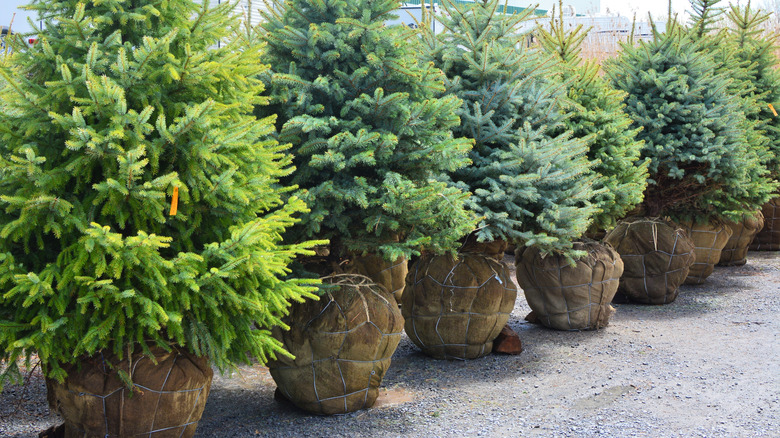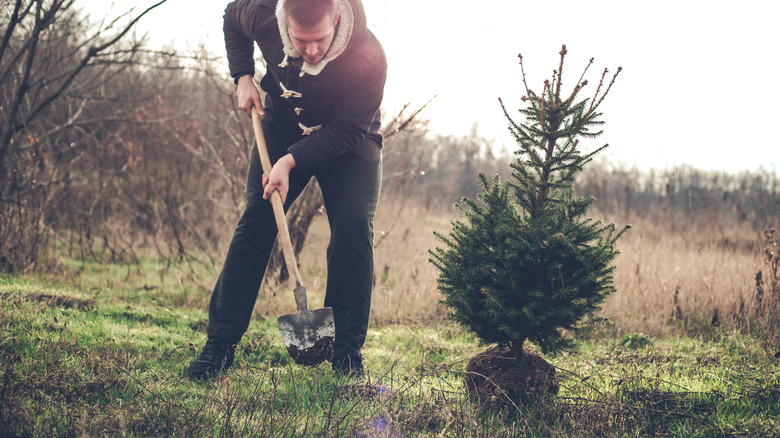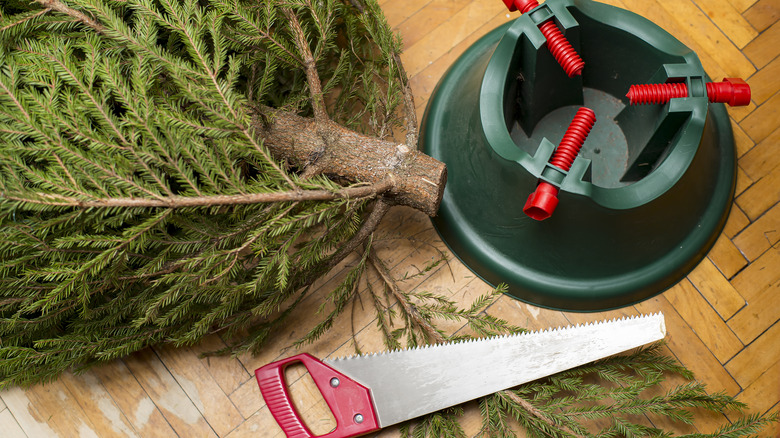Garden Trees, Shrubs & Vines
Jenny Lynch
If you love having a live Christmas tree in your home for the holidays, you’re probably familiar with the sinking feeling that comes at the end of the season as it dries out and turns brown. Whether you enjoy the age-old tradition of tramping out into the snow and cutting down a tree at a sustainable farm or carefully picking the best one from the stacks of conifers shipped across the country to major box stores, there’s something sad about watching a majestic symbol of the holiday season slowly wither and die.
According to Insider, you may be able to keep your Christmas tree alive outdoors in a container, which can then be brought inside again and re-decorated the following year. It’s also possible to replant it in your yard, in which case it will continue to grow taller and taller each year. This won’t work for just any tree, though. Here’s what you need to know before you head out in search of your perfect Yuletide tree.
Buy the right kind of Christmas tree

Vintagepix/Shutterstock
There are two things to think about when purchasing a Christmas tree that you’ll be replanting later. First and foremost, it will need to be a tree that can indeed be replanted. Per the University of Florida Institute of Food and Agricultural Sciences, this means one with its root ball intact or one that is growing in a container. Additionally, the specific species will matter as it must be well-suited to your climate zone and the amount of space in your yard.
Give your outdoor space a thorough review in order to carefully pick the best spot to plant your tree. Regardless of what size it is when you bring it home for the holidays, it’s going to keep growing once planted. Considering that the average dwarf Alberta spruce usually stops growing once it reaches 8 feet (via Fast Growing Trees) yet the average eastern white pine can shoot up to more than 80 feet (via Fast Growing Trees), a little research into what will work best for your yard is going to be well worth the effort.
Furthermore, year-round weather matters. The University of Florida advises sticking to native or well-adapted species, keeping in mind that just because it’s for sale in your town certainly doesn’t mean it can grow there.
How to replant your live Christmas tree

Twentyseven/Getty Images
Replanting your Christmas tree starts by keeping it healthy before, after, and while it’s inside tending to its festive holiday duties. Start by leaving it outside in the shade for a week so it will slowly get used to less available natural light. Once it’s indoors, only keep it there for up to 10 days and keep it hydrated but not oversaturated with water (via University of Florida Institute of Food and Agricultural Sciences).
Wherever you decide to plant it, you’ll need to dig a substantial hole to get it situated in the ground. A hot tip for those living in a cold climate: Dig this hole well in advance of the ground freezing and keep it clearly marked so no one trips and falls. Gently place the entire root ball into the hole, backfill it with soil, and cover it with mulch. Be sure to water the tree with regularity while it’s establishing its roots.
Davey notes that an alternative to replanting is to pot your live evergreen tree in a large container. This is a great way to maintain it at a smaller size. However, it probably won’t live as long as one that’s planted and you must remember to keep it well-watered.
What if you already bought a cut tree?

Koldunova/Getty Images
The quick answer to whether you can replant a cut Christmas tree without a root ball is no; without its roots, it simply won’t survive. Davey puts the kibosh on any hopes of replanting a cut tree, explaining that even if it’s growing pine cones or budding it won’t be able to survive in the long run.
Instead, you should consider recycling trees through your local municipality, which will likely use them to create mulch for your city’s parks. If you have access to a wood chipper, you may choose to create mulch for your garden. Creative DIYers might fashion a trellis or archway for their garden out of tree branches.
Your Indoor Herbs and Garden agrees that there’s little to no chance that a cut tree will magically come back to life when replanted into the soil. However, the blog supposes that it wouldn’t hurt to try. Key factors for any chance at success include removing needles and branches from the lower section of the trunk and drilling holes into it to allow for water to seep in, sawing off a chunk of the stump and applying rooting hormone to the fresh cut, and keeping it thoroughly watered.



